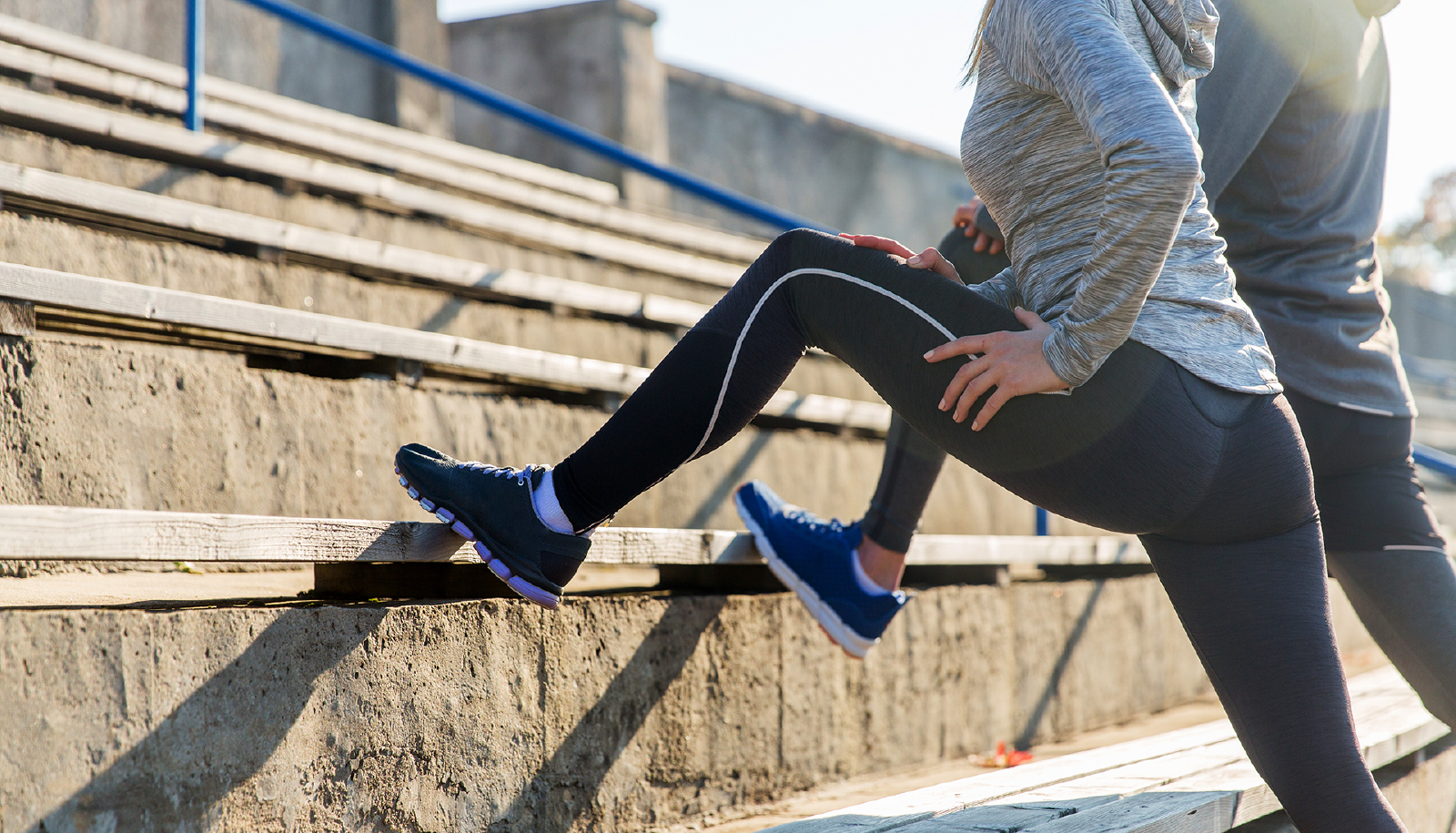If you’ve ever experienced the disappointment of having your 5K plans suddenly derailed because of an injury, then you understand the importance of taking preventative measures before lacing up your running shoes.
No matter whether you’re in training or it’s race day, taking good care of yourself is well worth it. Keep reading for useful tips on how to make sure injury prevention is the top priority for your upcoming 5K.
THE 5 MOST COMMON RUNNING INJURIES
Before we get into how to avoid injuries for your 5K race, let’s talk about the most common ways runners get hurt.
1. Achilles Tendinitis
Tendinitis in the Achilles tendon occurs when too much stress is placed on the tendon, resulting in inflammation, pain, and discomfort while running or even walking.
To prevent this type of injury, incorporate stretching exercises into your pre-run routine and ensure you warm up properly before each run — this will help reduce tension in the Achilles tendon area. Additionally, vary your running surface as much as possible — running only on hard surfaces can strain both your calves and Achilles' tendons.
2. Shin Splints
Shin splints are another common injury among runners; they refer to pain along either side of the shinbone caused by inflammation in the muscles surrounding it.
To avoid shin splints from happening, make sure that you’re wearing supportive footwear while running — unfortunately, old or worn-out shoes won’t provide enough cushioning, which can lead to painful shin splints down the line. Also, focus on building lower leg strength with calf raises and heel drops; this will help reduce imbalances between left/right sides, which could lead to an increased risk for shin splints later on down the line.
3. IT Band Syndrome
IT Band Syndrome occurs when the IT band becomes tight due to overuse or poor posture while running; this leads to pain in the knee joint area and reduced hip joint mobility.
To avoid this issue, focus on strengthening your hip abductor muscles with exercises such as lateral leg raises and fire hydrants; foam rolling can help loosen up any tightness in that area before you run. Further, cross-training activities like swimming or cycling can help build strength without putting too much strain on one particular muscle group as running does.
4. Runner’s Knee
This injury is common among runners and refers to pain around or behind the kneecap. It’s usually caused by overuse, but can also be linked to weak quads or tight hip flexors.
To avoid this injury, strengthen your core muscles and stretch your quads after each run. Ensure your shoes are in good condition too — worn-out shoes can cause excessive strain on your knees.
5. Hamstring injuries
Hamstring injuries occur when the hamstring muscle becomes strained due to overuse; these injuries typically range from mild strains (which may require rest) to more severe tears (which could even require surgery).
To prevent hamstring injuries from occurring, make sure you are doing dynamic stretching exercises before each run — this will help increase flexibility and range of motion in that area, reducing the chance of injury later on down the line. In addition, don’t push yourself too hard if you feel discomfort during a run. In other words, listen to your body!
5 INJURY PREVENTION TIPS FOR 5K RUNNERS
Running a 5K is a great way to stay active and challenge yourself physically. But it can also put you at risk of specific injuries if you don’t take the proper precautions. These are the five best injury prevention tips for 5K runners, so you can get the most out of your running experience while staying safe and healthy.
1. Wear Proper Gear
A suitable pair of shoes is essential for runners who want to stay injury-free and enjoy running for as long as possible.
When shopping for training shoes, there are many factors to consider, such as weight, body type, and pronation (or how your foot rolls inward as you strike the ground). Going to a running specialty store is often the best way to get proper advice on what shoe is right for your needs to prevent running injuries. It’s also essential to swap out your shoes frequently – at least every 500 miles – to avoid having undersized or worn-out footwear in the middle of a run. Investing in good quality shoes that fit well with your natural form and stride is vital, so don’t skimp on this critical item!
2. Stretch Before Exercise
Stretching before exercise is another crucial tip for preventing injuries and helping your muscles prepare for the physical demands of running a 5K race. Spend just 10 minutes stretching your hamstrings, quadriceps, calves, hips, and lower back before beginning any activity.
It’s also helpful to incorporate dynamic stretches, such as lunges, into your routine to help warm your body more effectively.
3. Listen To Your Body
Listening to your body is one of the best ways to avoid injury while running a 5K race. Ultimately, it may tell you first that something isn’t quite right.
If you feel pain or discomfort in any part of your body at any point during your run, stop immediately and take a break until it subsides. Continuing through pain can lead to further injury, so it’s better to stop and listen instead of pushing through.
4. Get Plenty Of Sleep
For serious runners, getting adequate sleep is imperative for injury prevention. According to medical experts, sleep enhances athletic performance by reversing the effects of fatigue, boosting physical and mental energy, and increasing cognitive performance.
Beyond that, it’s challenging to heal muscle damage or injury while sleeping if your body hasn’t had enough time to rest and recuperate properly. That’s why most medical professionals recommend athletes get between 7–9 hours of sleep a night to maintain peak performance and protect against specific injuries.
What’s more: sleep quality is just as important as quantity — ensure you’re sleeping on a comfortable mattress and have a dark environment for optimal restful nights.
5. Eat Healthily
Eating a healthy diet for a runner is just as crucial as getting the right rest and training. When your body is fueled with the proper nutrients, it will help you prevent injury and equip you with the energy to sustain those longer runs.
Eating enough food before running helps ensure your muscles are ready to handle challenging workout sessions. Having quality meals throughout the day gives your muscle tissues time to repair after a strenuous workout.
Ultimately, maintaining a healthy diet will provide you with more natural energy for better performance and injury prevention in the long term.
Running a 5K can be an incredibly rewarding experience, but it’s essential to ensure that you practice safety first by following these injury prevention tips for runners. Wear quality gear to cushion and support, stretch properly before exercise, always listen to your body, rest, and eat healthily. With these five tips in mind, you’ll enjoy all the benefits of running without putting yourself at risk of injury!
If you’re looking for a worthwhile 5K, look no further than the SimplyIOA Corporate 5K, Presented by Key HR. Located in Orlando, FL on May 4, 2023, you and your Florida corporation will love the teamwork and comradery this race brings, along with the opportunity to raise money for worthy causes in the Track Shack Youth Foundation and Second Harvest Food Bank of Central Florida.










